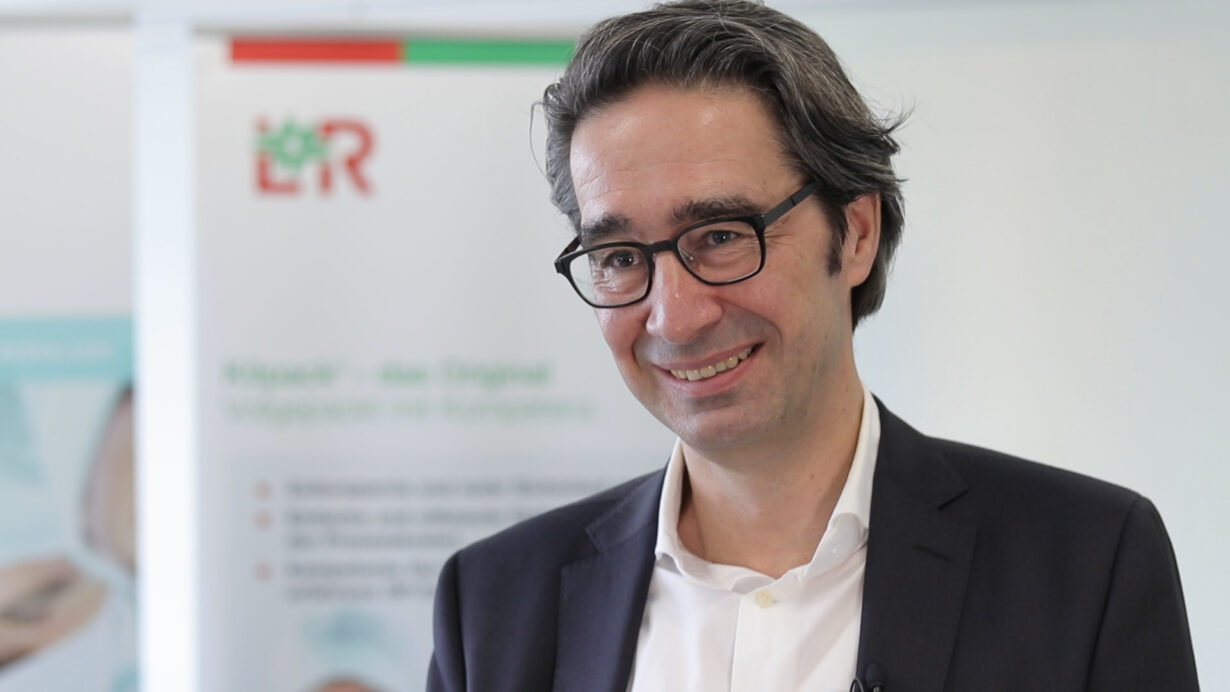“Disregard for hygiene is no longer acceptable“
How can hand hygiene compliance in hospitals be increased? This is one question that Simone Scheithauer addresses in... read more

Hand hygiene and surface disinfection are effective measures for reducing or preventing nosocomial infections and outbreaks. These practices could also reduce the use of antibiotics, which is why many players are driving innovation in the area of surface disinfectants and hand disinfection products. Few people have a deeper understanding of the sector than Dr Roland Knieler, Managing Director of Knieler & Team. Here, the chemist and disinfectant expert discusses recent innovations in the area of disinfection, and how compliance in medicine can be improved.
Dr. Roland Knieler: In the area of surface disinfection, I see the switch to ready-to-use systems as the biggest change in recent years. It has become possible for medical and healthcare personnel to use pre-soaked wipes, which help to largely avoid dosage and application errors. The ready-to-use systems thus increase safety in healthcare facilities, increase compliance and make work easier for staff. As far as hand disinfection is concerned, in my opinion, one significant innovation is that the dispensers are now available and clearly visible directly at the point of care. The dispensers used to be hung in hallways or next to the doors inside the rooms, but the focus is now on making the products as easy as possible to use when they need to be. Another way to support compliance is to design the dispensers in signal colours.
Knieler: The drivers of innovation in this area are very diverse. One of them is of course, the users who give feedback on the products. Otherwise, innovation is the result of new studies, new guidelines and input from companies that develop new products or that want to further improve the effectiveness of existing products. What inhibits innovation is, above all, the high level of regulation on this market. This is why the disinfectant industry needs to be backed by a great deal of research and documentation, so it can guarantee patient safety and user safety while meeting the high demands.
Knieler: Absolutely. An essential phase during development is the approval of the products by the authorities, for example. The time involved can almost be compared to the development of pharmaceuticals, and the costs for development, documentation and approval have multiplied in recent years. However, the anticipated revenue from disinfectants is a fraction of that for pharmaceuticals.
Knieler: What’s so special about residual active ingredients is that they remain on the skin – in contrast to alcohol. In the past, it was assumed that these could extend the effectiveness of hand disinfectants. In the meantime, however, several studies have shown that residual active ingredients are not more effective but, on the contrary, their use increases the risk of side effects for users. This is why it is recommended to manufacture hand disinfection products without perfumes, dyes and active ingredients with residual effect (more on this topic: surgical hand disinfection). This increases skin comfort and avoids irritation, both of which increase compliance. Using the right ingredients is an effective way to increase hand hygiene compliance.
Knieler: Hygienists and experts from the health departments are very extensively involved in the establishment of guidelines. And especially hygienists and their employees know which problems arise in their healthcare facilities – often directly from the users, of course. So, a lot of practical experience comes into play here. This leads to the development of studies, which in turn lead to evidence-based findings that are incorporated into guidelines. There are many practical examples here: more dispensers per bed, dispensers at the point of care, dispensers in signal colours – studies have shown an increase in compliance following all of these interventions. Increasingly, the primary aim of directives, research and the corresponding industry is making it simpler to apply hygiene measures, so that these are easier to use in practice.